So you’ve given each of your students a 120 chart. Now what? You may be wondering what are some engaging 120 chart activities for first grade? Fear not! In this blog post, I will go over six of my favorite 120 chart activities for first grade that can be done whenever you want students to work on their number sense or just need a quick filler activity.
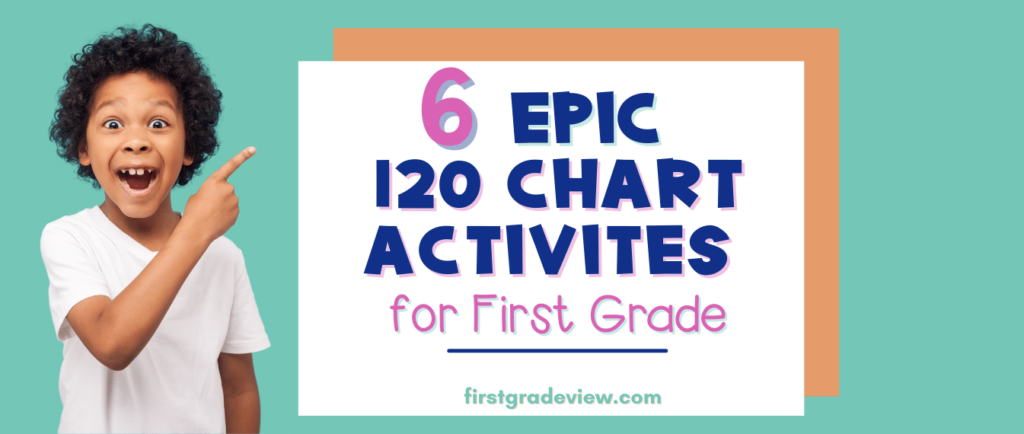
Why Use 120 Chart Activities for First Grade?
A 120 chart provides a framework for students that helps them understand our base ten number system. When a 120 chart is used intentionally, it helps students look for and make use of structure and notice patterns. With a 120 chart, students can explore many concepts such as counting, addition, subtraction, multiplication, develop number sense, and more!
120 Chart Activity Materials
It’s best to have a 120 chart that your students can access at any time. I have found the options listed below as the most user friendly choices:
–Dry erase 120 chart for students from Lakeshore Learning
-Copy of 120 in a dry-erase pocket
–120 Anchor Chart for classroom use. You can laminate this and use a dry-erase marker on it.
–120 Pocket Chart– This is a great option for group lessons or for use in a math center
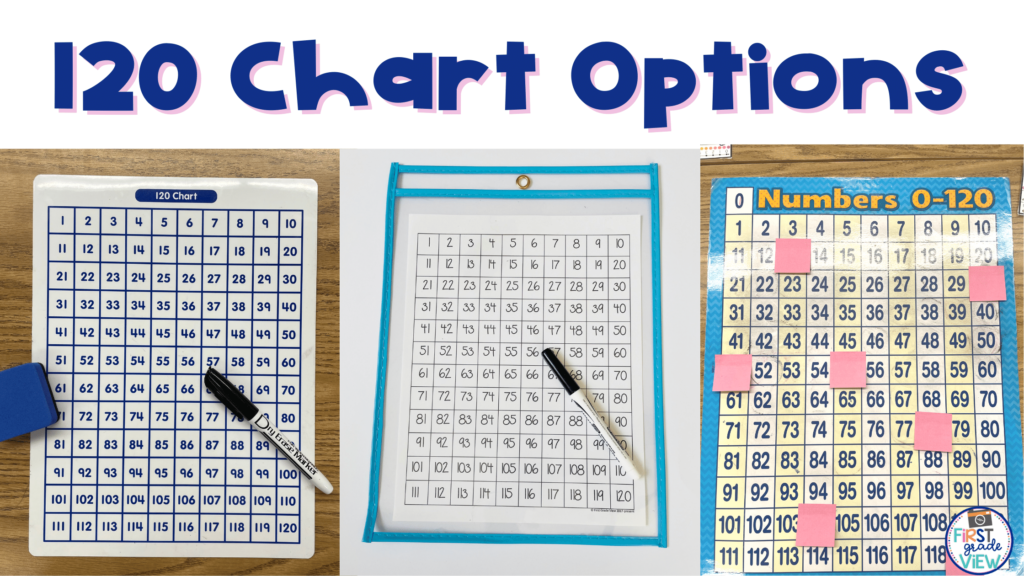
120 Chart Activities for First Grade
What you’ll love most about 120 chart activities are they can be used throughout the year. Best of all, they do not take up a lot of time but provide a big impact on student learning! Here are 6 of my favorite 120 activities for first grade:
1. Build the 120 Chart-This activity is great for when you first introduce the 120 chart to your class or to use at the beginning of the year. Using a 120 pocket chart, remove numbers from the chart so there are numbers missing. Hand the missing numbers to your students. Have them come up to the pocket chart and determine where the number goes. Don’t forget to have students explain their reasoning when placing the missing numbers back on the chart.
Another version of this activity is to cover numbers on a 120 chart using post-its. Have students determine what numbers are under the post-its and how they know. For example, if 55 is covered, a student might say, “I know 55 is under the post-it because it is between 54 and 56.”
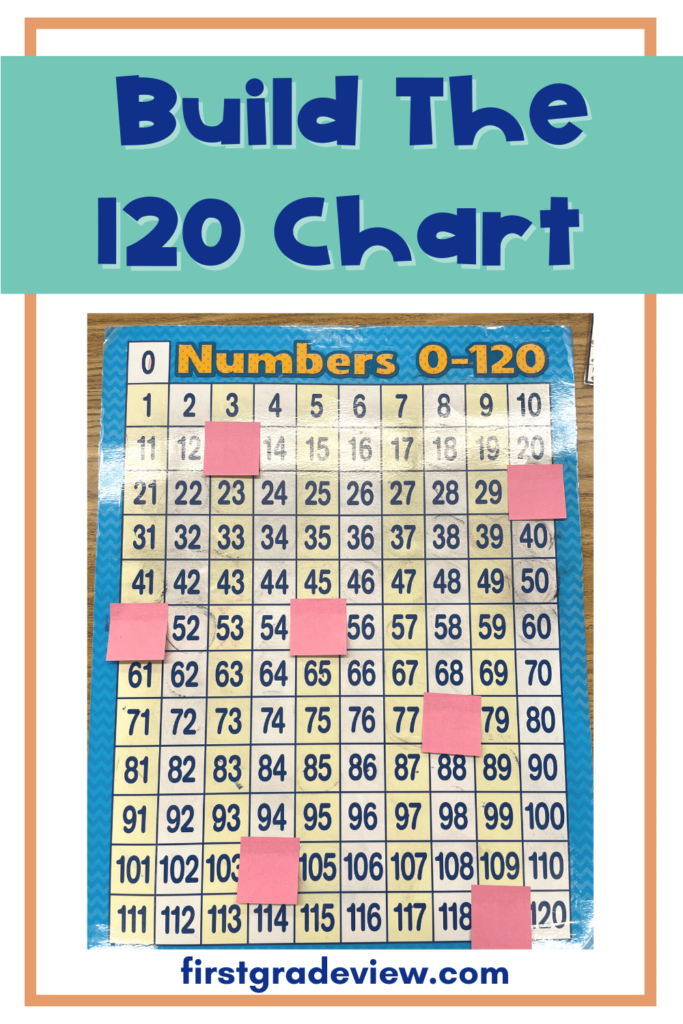
2. Up, Down, Left, Right- In this activity, you present students with a number to find on the 120 chart. For example, “Find 35.” Afterwards you present arrows to let students know if they should move up, down, left, or right on their chart. For example, 35 → = 36. Discuss with students what they think this means. Hopefully they will see that an arrow pointing to the left means to add 1 more. You can then ask what they think 35 ← means. Hopefully they will be able to tell you it means to subtract 1 or 1 less, so 35 ← = 34. You can also use ↑ for 10 less and ↓ for 10 more. As students get better at this activity, you can include more arrows such as
35 → → ↓ = ? Hopefully students will see that 35 → → ↓ = 47. You can even have students explain their thinking and about how they know the answer is 47. For example, 35 +1 +1 +10 = 47
3. 120 Chart Puzzles– This activity is perfect for math centers or early finishers. All you need is to take a 120 chart and print it out on different colored paper. I prefer to use bright cardstock. Then, cut each chart up in various pieces and place them in a baggie. Students will take the pieces and put the 120 chart back together. You could even have students create their own puzzle!
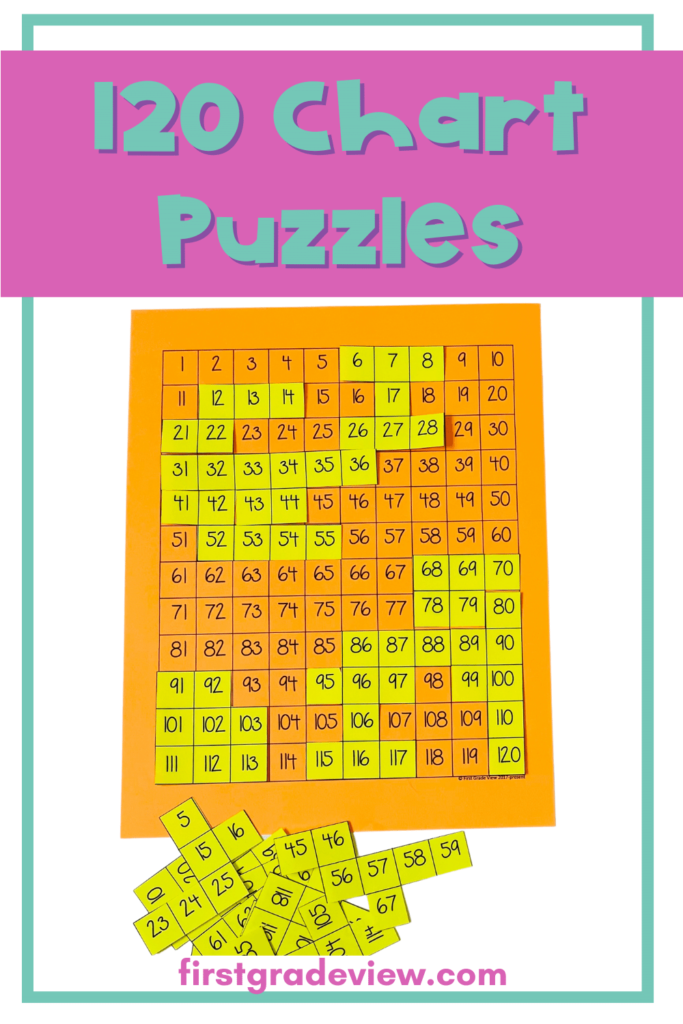
4. Mystery Number- In this activity, students are given a set of place value clues to solve the mystery number. As they receive each clue, students can rule out numbers and narrow down the possible options for the mystery number. For example, I am an odd number. I am between 15 and 35. I have 2 tens. The sum of my ones is 2+7. Who am I? I am 29!
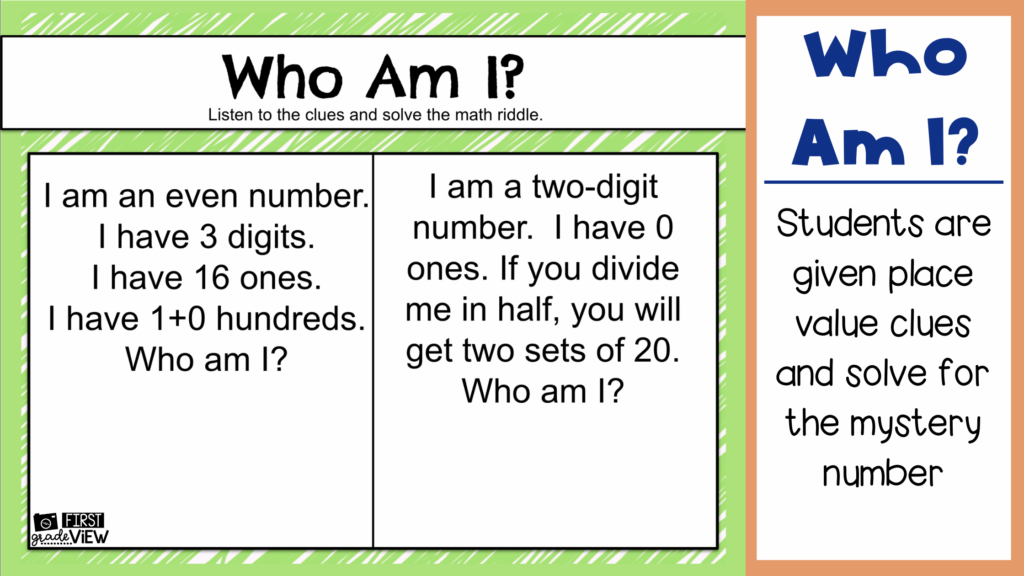
Another version of this activity is where you choose a mystery number. Students must then ask you questions. For example, students could ask, “Is it odd?” “Is it less than 50?” As the questions continue, students will begin to narrow down the options and finally solve the mystery number.
5. What’s My Number? This is by far my favorite 120 chart activity. It is part of my daily math routine. What I like best is that in 5 minutes, my students can work on math facts, place value, and develop their math vocabulary! For this activity, students are presented with a series of 4 steps. For example,
-Start with the the difference of 12-7.
-Add the sum of 8+5+2
-Increase your number by 1 ten, 3 ones
-Add 10 more. What is the number?
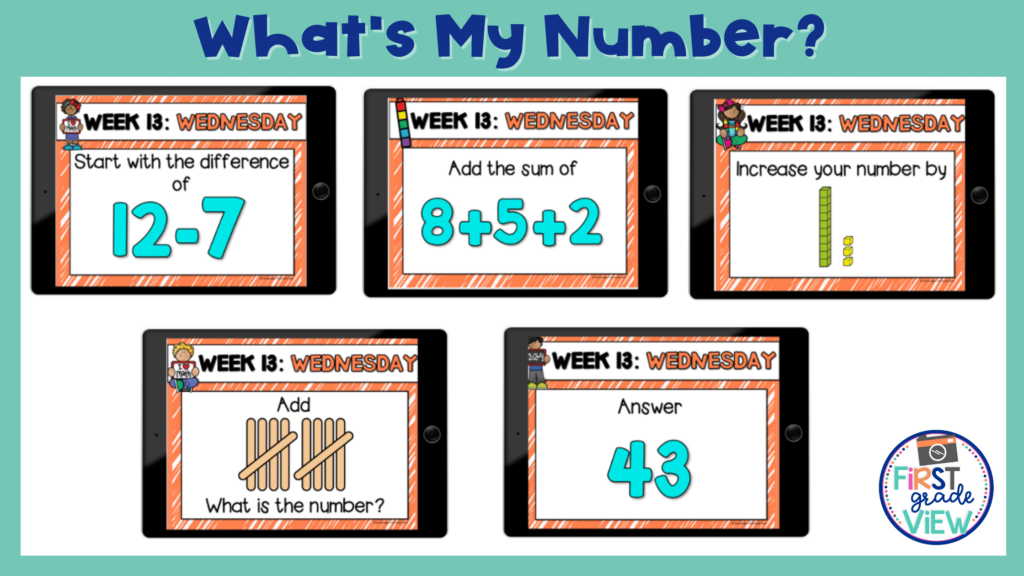
Students follow along and must complete each step. After the fourth step, students must figure out the number. This engaging activity helps students become familiar with the 120 chart and use it as a tool for addition and subtraction. If you are interested in this activity already done for you, click here for the yearlong PDF version or here for the yearlong digital version.
6. I Have…, But I Want… In this activity students must figure out how far apart the numbers are. For example, you might say, “I have 13 but I want 20. How many more do I need?” or “I have 50 but I want 20. How many less do I need?” Students would use the 120 chart to solve the difference between the two quantities given.
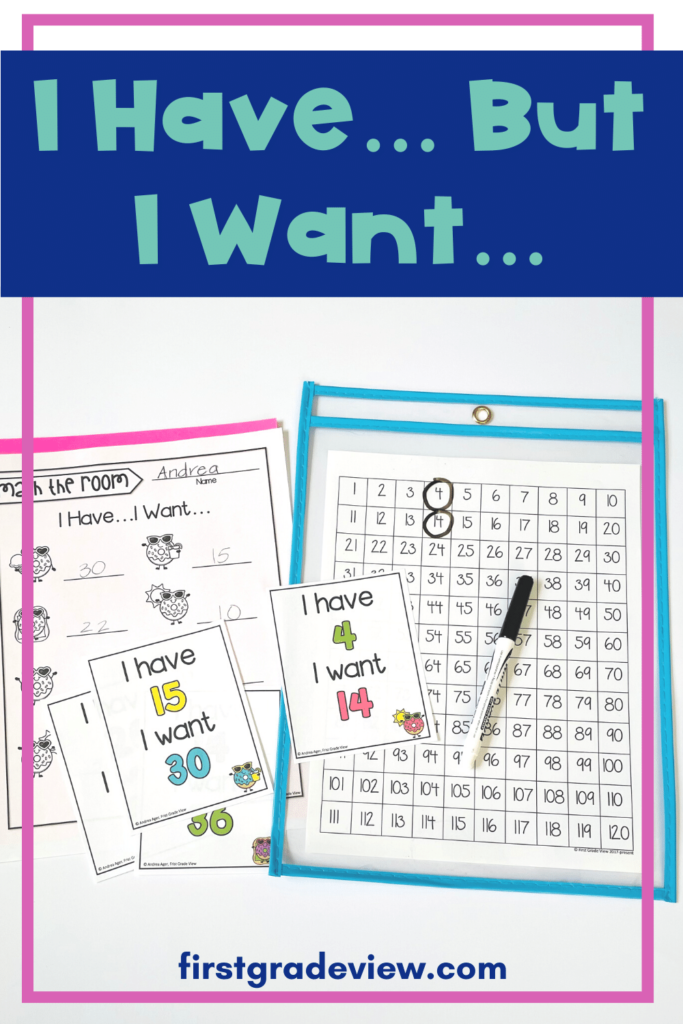
Hopefully this post has given you some ideas on how you can easily incorporate 120 chart activities in your classroom. If you have any favorite activities that I didn’t mention, I’d love to hear about them in the comments!
You may also like:
How to Turn Your Hands-On Math Activity From Zero to Hero
How To Accomplish a More Positive Student Centered Math Classroom
Standards of Math Practice: Helping Kids be Great Mathematicians





